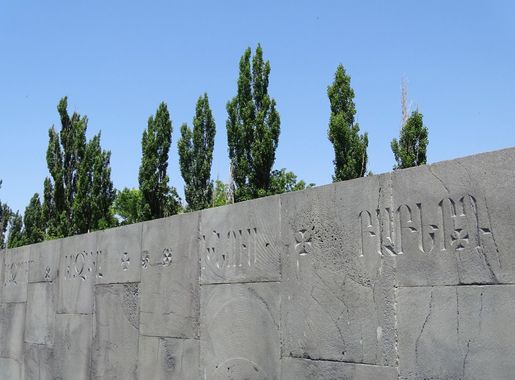
A Solemn Tribute to Resilience: The Armenian Genocide Memorial Complex
Visit the Armenian Genocide Memorial Complex in Yerevan, a poignant site that honors the memory of genocide victims and offers profound insights into Armenian history.
The Armenian Genocide Memorial Complex, also known as Tsitsernakaberd, stands as a poignant reminder of the tragic events that befell the Armenian population during the early 20th century. Located on a hill overlooking the capital city of Yerevan, the site offers a reflective space for visitors to pay their respects and learn about this significant chapter in Armenian history. The complex is comprised of several key features, including the Memorial Wall, the Eternal Flame, and the Genocide Museum-Institute. The Memorial Wall is inscribed with the names of towns and villages where massacres took place, providing a stark visualization of the widespread impact of the genocide. The Eternal Flame burns continuously, symbolizing the enduring memory of the victims. A visit to the Genocide Museum-Institute provides a deeply informative and emotional experience. The museum houses extensive exhibits that detail the history, causes, and consequences of the genocide. Through photographs, personal accounts, and historical documents, visitors gain a comprehensive understanding of the events and the resilience of the Armenian people. The museum also emphasizes the importance of human rights and the prevention of future genocides, making it a place of both remembrance and education.
Local tips in Armenian Genocide Memorial Complex
- Visit early in the morning or late in the afternoon to avoid crowds and experience a more reflective atmosphere.
- Allocate at least three hours to fully explore both the memorial and the museum exhibits.
- Wear comfortable walking shoes as the complex is spread over a large area.
- Respect the solemn nature of the site by maintaining quiet and observing appropriate behavior.
- Photography is allowed in most areas, but always check for signage indicating restrictions.
A Solemn Tribute to Resilience: The Armenian Genocide Memorial Complex
The Armenian Genocide Memorial Complex, also known as Tsitsernakaberd, stands as a poignant reminder of the tragic events that befell the Armenian population during the early 20th century. Located on a hill overlooking the capital city of Yerevan, the site offers a reflective space for visitors to pay their respects and learn about this significant chapter in Armenian history. The complex is comprised of several key features, including the Memorial Wall, the Eternal Flame, and the Genocide Museum-Institute. The Memorial Wall is inscribed with the names of towns and villages where massacres took place, providing a stark visualization of the widespread impact of the genocide. The Eternal Flame burns continuously, symbolizing the enduring memory of the victims. A visit to the Genocide Museum-Institute provides a deeply informative and emotional experience. The museum houses extensive exhibits that detail the history, causes, and consequences of the genocide. Through photographs, personal accounts, and historical documents, visitors gain a comprehensive understanding of the events and the resilience of the Armenian people. The museum also emphasizes the importance of human rights and the prevention of future genocides, making it a place of both remembrance and education.
When is the best time to go to Armenian Genocide Memorial Complex?
Iconic landmarks you can’t miss
Cascade Complex
Explore the Cascade Complex in Yerevan - a stunning fusion of art, culture, and breathtaking views of Armenia's capital.

Tsitsernakaberd Armenian Genocide Memorial Complex
Discover the powerful history behind the Tsitsernakaberd Armenian Genocide Memorial Complex, a must-visit site in Yerevan, Armenia.

Armenian Alphabet Monument
Explore the Armenian Alphabet Monument in Artashavan, a stunning tribute to the Armenian language and culture, set amidst beautiful landscapes.
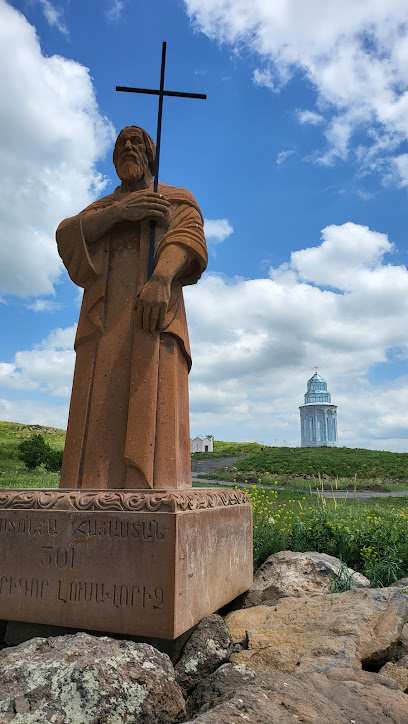
Mother Armenia Monument
Explore the rich history and breathtaking views at the Mother Armenia Monument, a symbol of strength in the heart of Yerevan.
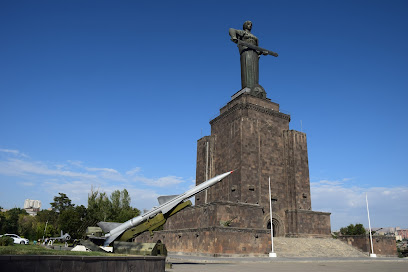
Memorial to the 50th Anniversary of October Revolution
Explore the Memorial to the 50th Anniversary of the October Revolution in Yerevan, a historic site offering stunning views and profound significance.

Yazidi Genocide Memorial
Explore the Yazidi Genocide Memorial in Yerevan, a poignant historical site highlighting resilience, cultural heritage, and human rights.
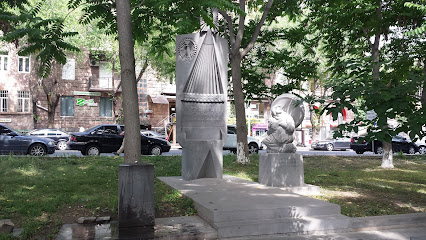
Armenian Genocide Memorial
Explore the Armenian Genocide Memorial in Gyumri, a powerful historical landmark that commemorates resilience and remembrance through art and architecture.
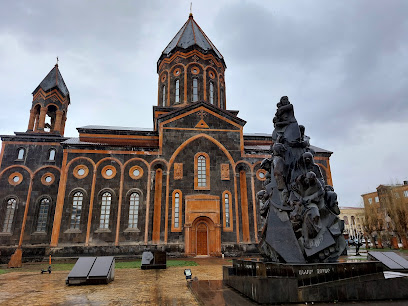
Unmissable attractions to see
Vernissage
Explore the vibrant Vernissage in Yerevan, a treasure trove of Armenian handicrafts, art, and local flavors that celebrate the nation's rich culture.
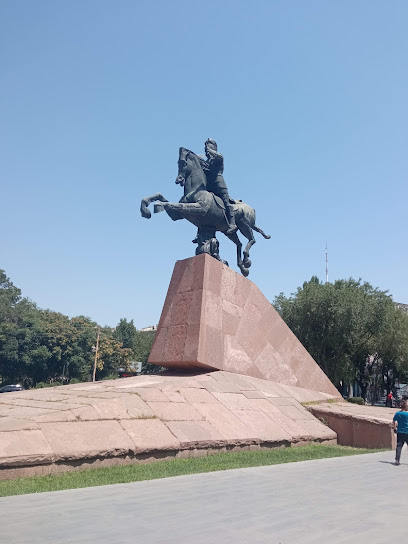
Geghard Monastery
Explore Geghard Monastery, a stunning 4th-century Armenian church carved into rock, surrounded by breathtaking nature and rich history.
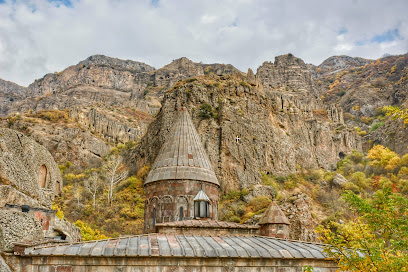
Noravank
Explore the stunning Noravank Monastery, a treasure of Armenian culture set against breathtaking red rock cliffs, perfect for history and nature enthusiasts.
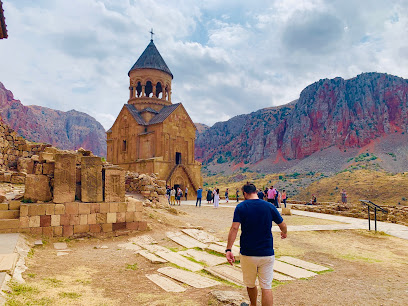
Matenadaran
Explore the rich history of Armenia at Matenadaran, home to ancient manuscripts and a beacon of cultural heritage in Yerevan.

National Gallery of Armenia
Discover the artistic treasures of Armenia at the National Gallery, featuring an extensive collection of local and international art in a stunning setting.
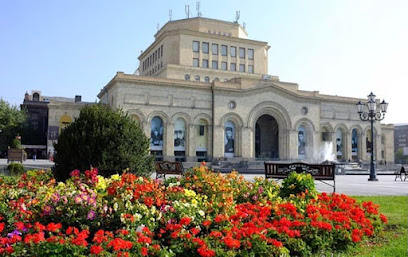
Vardanants Square
Discover the vibrant cultural heartbeat of Gyumri at Vardanants Square, where history and local life blend beautifully.
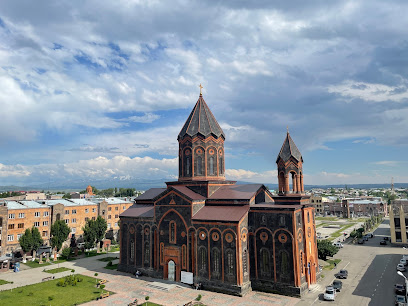
Devil’s Bridge
Explore the mesmerizing landscapes and rich legends at Devil's Bridge, Armenia's captivating natural wonder that enchants every visitor.
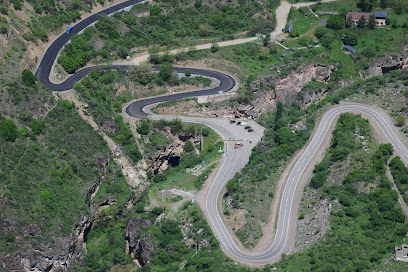
Lusik Aguletsi House-Museum and Art Cafe
Immerse yourself in Armenian culture at Lusik Aguletsi House-Museum and Art Cafe, where art meets tradition in Yerevan's charming atmosphere.
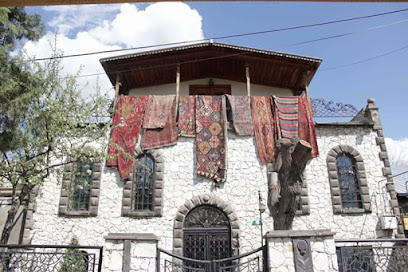
Yeghishe Charents House-Museum
Explore the Yeghishe Charents House-Museum, a gem in Yerevan celebrating the life and works of Armenia's cherished poet.
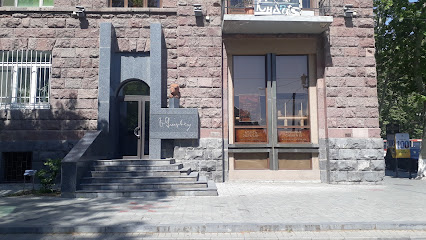
Ardvi Monastery
Explore Ardvi Monastery, a historical landmark in Armenia offering serene landscapes, rich culture, and breathtaking architecture.

Komitas monument
Explore the Komitas Monument in Vagharshapat, a cultural landmark dedicated to Armenia's legendary composer, celebrating the nation's rich musical heritage.
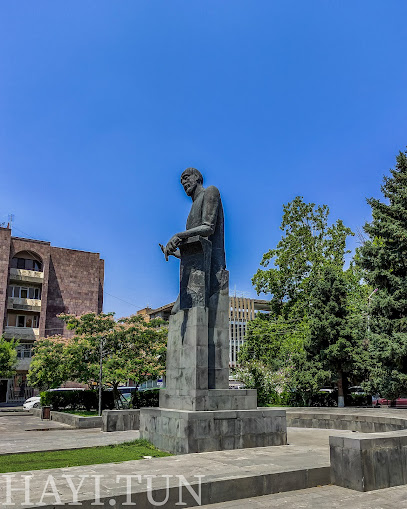
Diana Abgar Park
Explore the natural beauty and serenity of Diana Abgar Park in Yerevan, a perfect escape for relaxation and cultural experiences in Armenia.
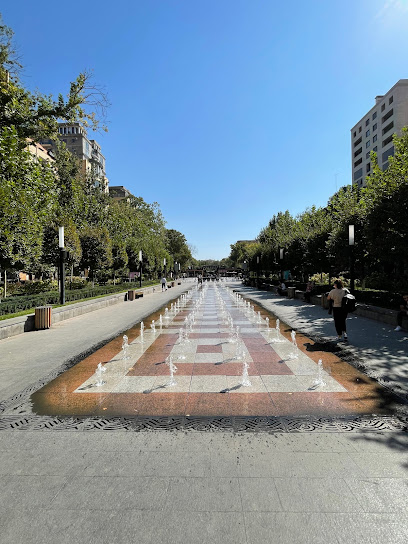
Emir Pir Huseyin Kara Koyunlu Tomb
Explore the Emir Pir Huseyin Kara Koyunlu Tomb in Yerevan, a beautifully preserved historical site showcasing Armenia's rich cultural heritage.
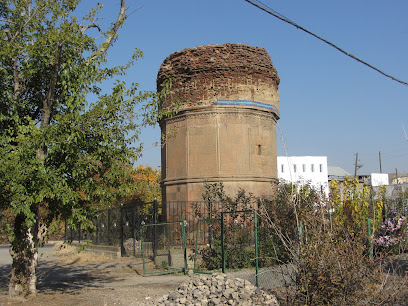
Khoren Ter-Harutyunyan Museum
Discover the life and legacy of Khoren Ter-Harutyunyan at this captivating museum in Vagharshapat, showcasing Armenia's rich literary heritage.
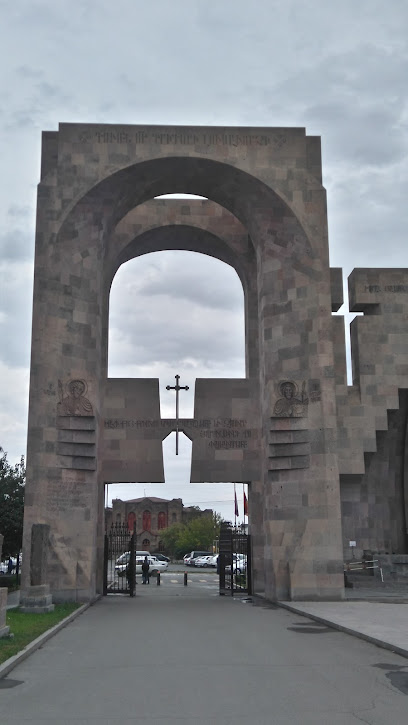
Yazidi Genocide Memorial
Discover the profound history and resilience at the Yazidi Genocide Memorial in Yerevan, a poignant tribute to the enduring spirit of the Yazidi people.
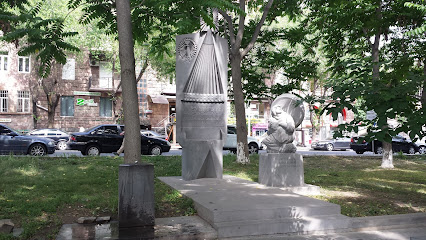
Essential places to dine
Lavash Restaurant
Discover the rich flavors of Armenian cuisine at Lavash Restaurant in Yerevan—where every meal tells a story.
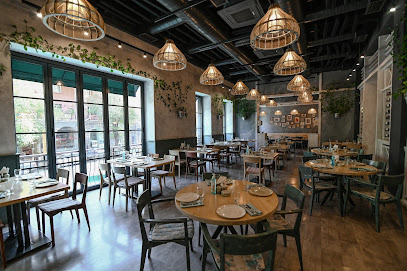
Tavern Yerevan
Discover the flavors of Armenia at Tavern Yerevan - where tradition meets taste in every delicious bite.

Tsitsernakaberd Armenian Genocide Memorial Complex
Explore Tsitsernakaberd: A poignant memorial honoring Armenian resilience amidst stunning landscapes.
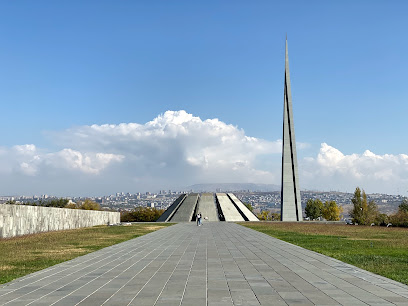
Sherep Restaurant ( Շերեփ ռեստորան )
Experience the best of Armenian flavors intertwined with European cuisine at Sherep Restaurant in Yerevan.
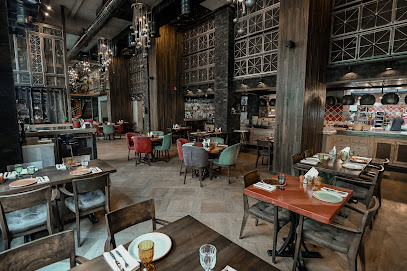
Tavern Yerevan (Teryan) Պանդոկ Երևան (Տերյան)
Discover authentic Armenian flavors at Tavern Yerevan (Teryan), where every meal tells a story steeped in tradition and culinary excellence.
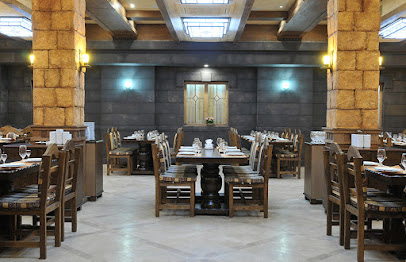
Кавказская пленница
Savor authentic Caucasian cuisine at Кавказская пленница in Yerevan—an unforgettable dining experience with family-friendly hospitality.
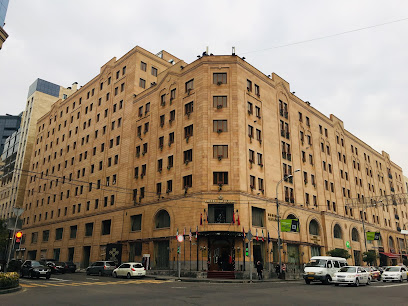
Tumanyan Khinkali
Discover Tumanyan Khinkali in Yerevan for authentic Georgian dumplings bursting with flavor and tradition in a cozy setting.
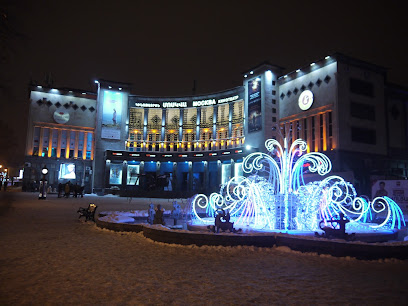
Dolmama - Armenia's Restaurant
Discover the essence of Armenian cuisine at Dolmama - where tradition meets modernity in every dish.
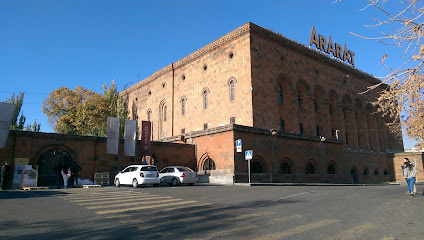
EL Garden
Discover the rich flavors of Armenian cuisine at EL Garden in Yerevan, where tradition meets modern culinary artistry.
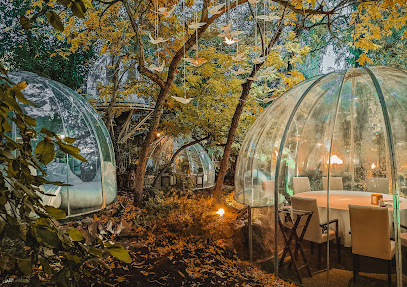
Gata Tavern
Experience authentic Armenian cuisine at Gata Tavern in Yerevan - where tradition meets taste in a cozy atmosphere.
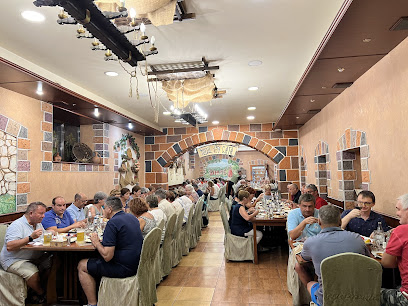
Katsin Restaurant
Discover an unforgettable dining experience at Katsin Restaurant in Yerevan with delicious fusion cuisine and lively entertainment.
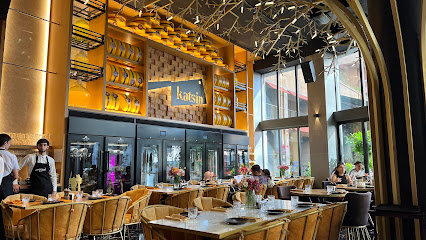
Vostan
Experience authentic Armenian flavors at Vostan in Yerevan - where tradition meets modern dining excellence.
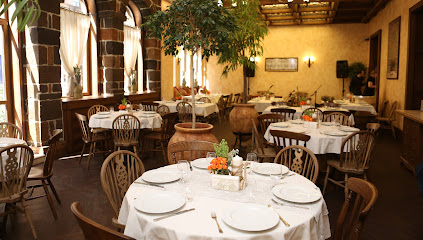
Tavern Yerevan riverside (Պանդոկ Երևան գետափին)
Experience authentic Armenian cuisine amidst breathtaking riverside views at Tavern Yerevan Riverside - your perfect dining escape.
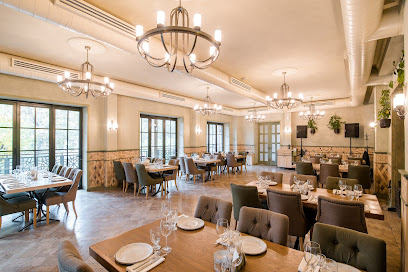
Smoking Chef (Սմոքինգ Շեֆ)
Discover the exquisite flavors at Smoking Chef in Yerevan—where culinary art meets vibrant ambiance for an unforgettable dining experience.
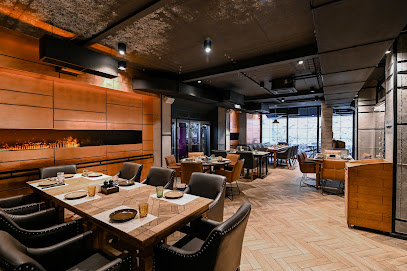
T Philosophy
Discover authentic Armenian flavors at T Philosophy in Yerevan – where tradition meets innovation in every dish.
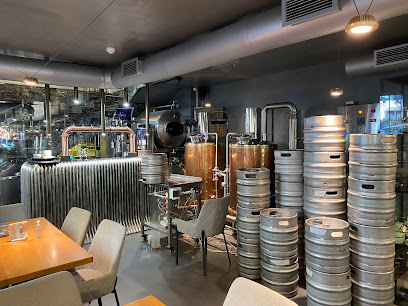
Markets, malls and hidden boutiques
Vernissage
Explore Vernissage, Yerevan's vibrant artisan market, where unique handicrafts and local art await every visitor.
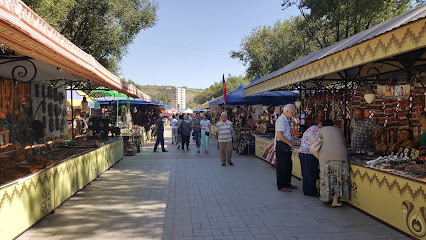
Tsitsernakaberd Armenian Genocide Memorial Complex
Explore the Tsitsernakaberd Armenian Genocide Memorial Complex, a solemn tribute that honors the memory of the Armenian Genocide victims in Yerevan.
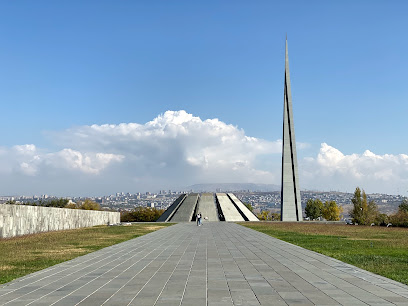
Tashir Street Shopping Centre
Explore Tashir Street Shopping Centre: a vibrant shopping haven in Yerevan, blending local culture with modern retail experiences.
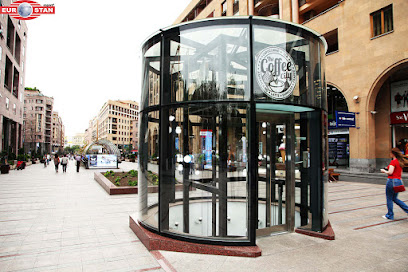
Flowers Yerevan (Mariella LLC)
Discover the enchanting world of Flowers Yerevan, where fresh blooms and unique gifts create unforgettable moments in Armenia's capital.

Dalma
Explore Dalma in Yerevan for a unique shopping experience featuring a diverse collection of trendy clothing and accessories that reflect Armenia's rich culture.
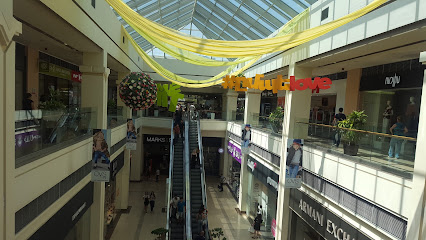
Multi Magic Mall
Explore Multi Magic Mall in Verin Ptghni, Armenia – a shopping paradise filled with diverse stores, delightful dining options, and endless entertainment for all ages.
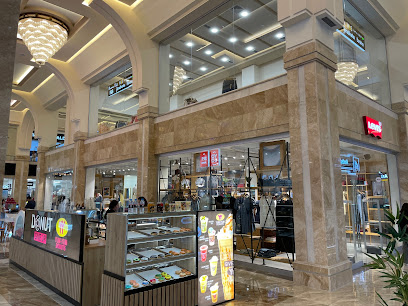
Party Shop
Explore Yerevan's Party Shop for vibrant balloons, unique gifts, and all your celebration needs in one colorful destination.
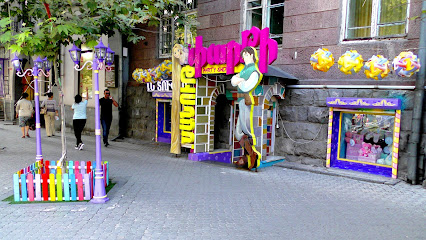
Tade masters' selection
Explore Tade Masters' Selection in Yerevan for unique Armenian gifts and souvenirs that embody the rich culture and artistry of Armenia.
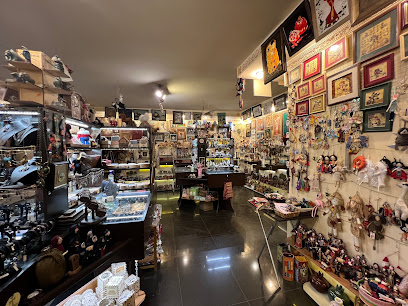
Latona Flowers & Gifts Delivery
Discover Latona Flowers & Gifts Delivery in Yerevan, your go-to destination for exquisite floral arrangements, dried flowers, and wedding essentials.

Classis Decor Curtains Քլասիս Դեքոր վարագույրներ
Discover exquisite curtains, bedding, and fabrics at Classis Decor in Yerevan, your one-stop destination for elegant home decor.

Sonsation
Explore Sonsation in Yerevan for unique souvenirs and charming gifts that embody the spirit of Armenia, perfect for all ages.

3dzook
Explore 3dzook for unique Armenian crafts and contemporary designs, a perfect stop for authentic souvenirs in Yerevan.

Move2Market
Explore Move2Market in Yerevan for an array of unique gifts and souvenirs that reflect the rich culture of Armenia.

Անթս
Explore the charm of Yerevan at Անթս, your go-to destination for authentic Armenian gifts and souvenirs to cherish forever.
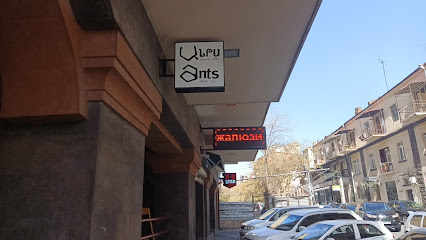
Blueberry Armenia
Explore Blueberry Armenia for the freshest local produce and unique organic products in the heart of Yerevan.
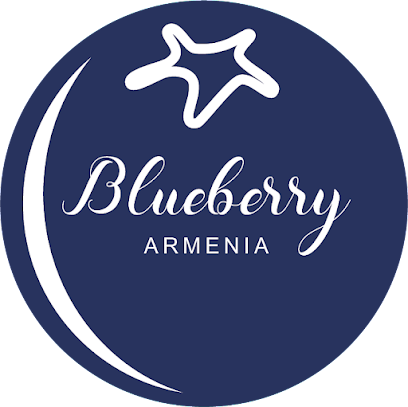
Essential bars & hidden hideouts
Tsitsernakaberd Armenian Genocide Memorial Complex
Explore Tsitsernakaberd Armenian Genocide Memorial Complex, a profound tribute to resilience and remembrance in the heart of Yerevan.
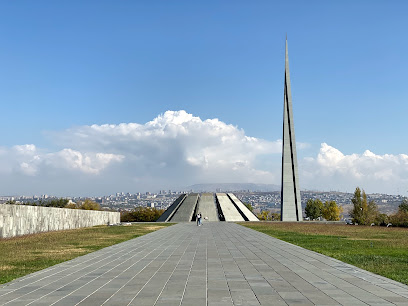
Dargett Craft Beer
Experience the best of Armenian craft brewing at Dargett, where local flavors meet innovative brewing in a vibrant brewpub atmosphere.
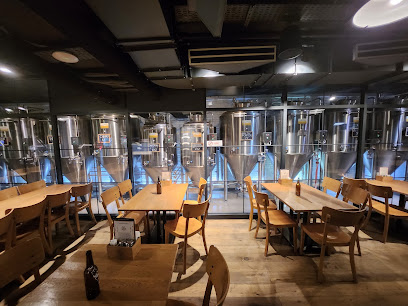
Beatles Pub Yerevan
Experience the lively spirit of the Beatles at this iconic pub in Yerevan, where great food, drinks, and live music come together.
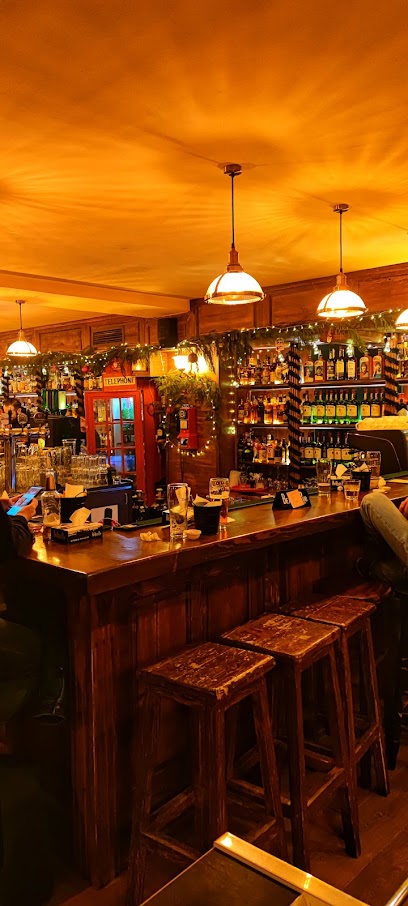
Wine Republic
Discover the finest Armenian and modern European cuisine paired with exceptional wines at Wine Republic in Yerevan.
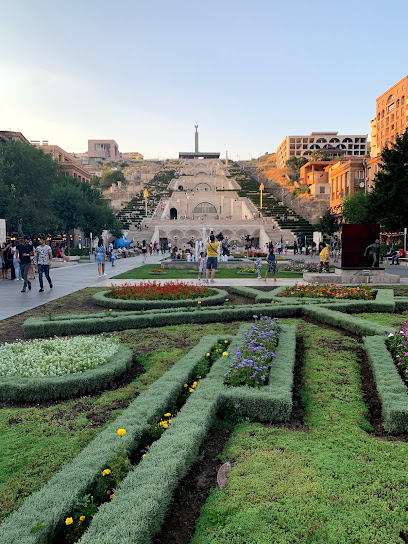
Calumet Ethnic Lounge Bar
Discover the lively atmosphere of Calumet Ethnic Lounge Bar in Yerevan, featuring a fusion of drinks and vibrant cultural experiences.
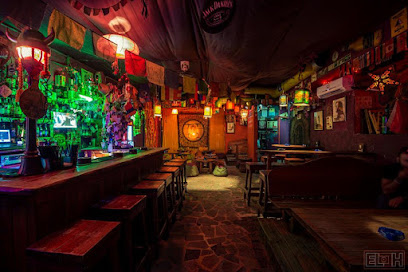
Kami Club
Discover the heart of Yerevan's nightlife at Kami Club, a premier musical destination where vibrant beats and unforgettable experiences await every night.
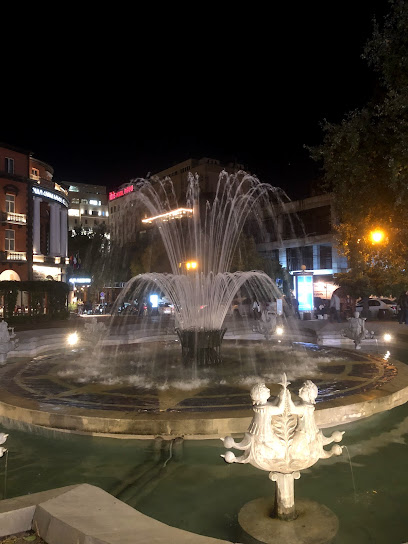
DABOO Cocktail Bar
Experience Yerevan's vibrant nightlife at DABOO Cocktail Bar, where expertly crafted cocktails and a lively atmosphere await.

In Vino
Experience the essence of Armenian wines at In Vino, a charming wine bar in the heart of Yerevan, perfect for relaxation and discovery.
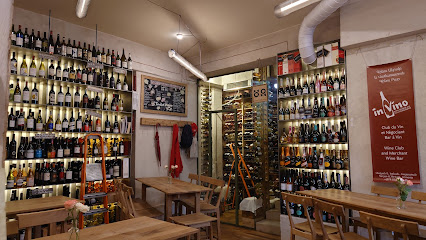
El Sky Bar
Experience the vibrant nightlife of Yerevan at El Sky Bar, where stunning city views and exquisite cocktails create unforgettable moments.
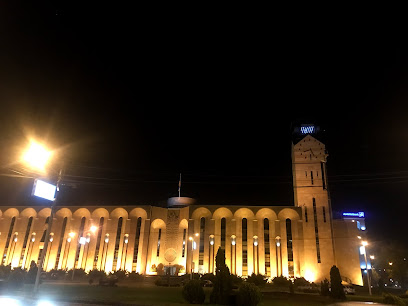
Tapastan
Experience the exquisite fusion of Armenian flavors with a modern twist at Tapastan, the must-visit restaurant in Yerevan for tapas lovers.
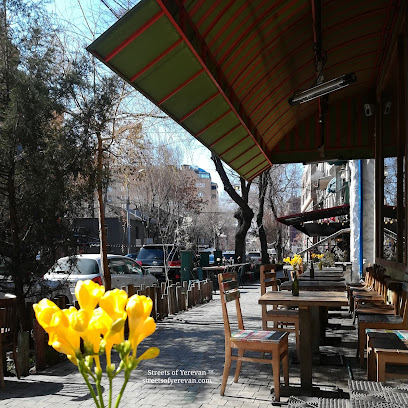
Liberty Pub
Discover the heart of Yerevan's nightlife at Liberty Pub, where vibrant atmosphere meets a wide selection of drinks and local culture.
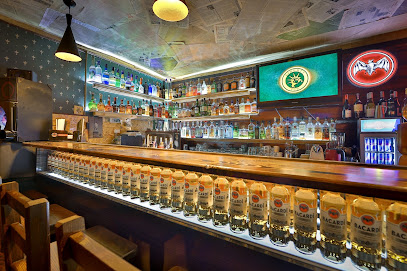
Mozaic Sky Restaurant
Savor exquisite cuisine with breathtaking views at Yerevan's premier dining destination, Mozaic Sky Restaurant.

Tom Collins
Discover the lively nightlife at Tom Collins, Yerevan's premier cocktail bar and dance club, blending great drinks with an energetic atmosphere.

The Kond House
Experience the vibrant nightlife of Yerevan at The Kond House, where refreshing drinks and tasty local cuisine await.
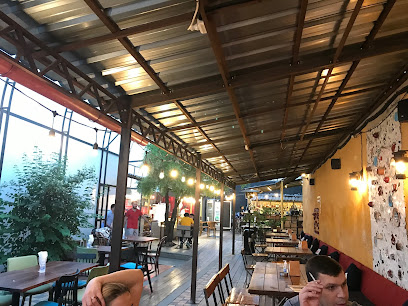
26 Irish Pub
Discover the vibrant atmosphere of 26 Irish Pub in Yerevan, where traditional Irish charm meets European culinary delights.
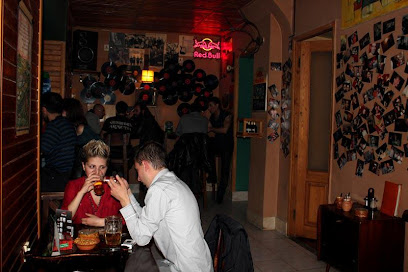
Local Phrases about Armenian Genocide Memorial Complex
-
- Helloբարև
[barev] - Goodbyeհրաժարվել
[hradzharvel] - Yesայո
[ayo] - Noոչ
[voch] - Please/You're welcomeխնդրում եմ
[khndrum em] - Thank youՇնորհակալ եմ
[shnorhakal em] - Excuse me/SorryՆերքեւ եմ
[nerkev em] - How are you?Ինչպես եք՝
[inchpes ek] - Fine. And you?Լավ եմ։ Անդ Դու։
[lav em. and du] - Do you speak English?Այո, խոսեք անգլերեն
[ayo, khosek angleren] - I don't understandԵս չհասկանամ
[es ch'hasganam]
- Helloբարև
-
- I'd like to see the menu, pleaseԽնդրում եմ դիտել ճաշափողությունը
[khndrum em ditel jashapoghut'yuny] - I don't eat meatԵս միս չեմ ուշադրություն
[es mis chem ushadrut'yun] - Cheers!Կէսի
[kesi] - I would like to pay, pleaseԽնդրում եմ վճարել
[khndrum em vchar'el]
- I'd like to see the menu, pleaseԽնդրում եմ դիտել ճաշափողությունը
-
- Help!Օրհնելի՛ք!
[orhnelik'] - Go away!Մի ընթացեք!
[mi antats'ek] - Call the Police!Թեկնարկեք ոստիին!
[teknark'ek vostinin] - Call a doctor!Թեկնարկեք բժշկին!
[teknark'ek bzhskin] - I'm lostԵս կենացված եմ
[es kenats'vats'em] - I'm illԵս հիվանդ եմ
[es hivanad em]
- Help!Օրհնելի՛ք!
-
- I'd like to buy...Խնդրում եմ գնել...
[khndrum em gnel...] - I'm just lookingՄիայն տեսնում եմ
[miayn tesnum em] - How much is it?Ինչքան է դառնալու ապրանքը
[inchk'an e darnalu aprank'y] - That's too expensiveԴա շատ թանկ է
[da shat tank e] - Can you lower the price?Արդեն կարդալ եք գինը
[arden kardal ek giny]
- I'd like to buy...Խնդրում եմ գնել...
-
- What time is it?Տեղեկացրեք ժամը
[tegekats'rek' zhamy] - It's one o'clockԺամը մեկ է
[zhamy mek e] - Half past (10)Կես է տասնմեկը
[kes e tasn'mek'y] - MorningԱռավոտ
[aravot] - AfternoonԿեսգիշ
[kesk'ish] - EveningԵրեկ
[yerek] - YesterdayԵրեկո
[yereko] - TodayԱյսօր
[aysor] - TomorrowՎարը
[var] - 1Մեկ
[mek] - 2Երկու
[yerku] - 3Երեք
[yerek'] - 4Չորս
[ch'ors] - 5Հինգ
[hing] - 6Վեց
[vets'] - 7Յոթ
[yot] - 8Ութ
[ut] - 9Ինը
[iny] - 10Տաս
[tas]
- What time is it?Տեղեկացրեք ժամը
-
- Where's a/the...?Ո՞րտեղ է ա/անգամին
[vort'egh e a/angam'in] - What's the address?Որտեղ է հասցեն
[vort'egh e hascen] - Can you show me (on the map)?Կարող եք ցուցադրել ինձ (քարտեզում)
[karogh ek tsuts'adrel indz (kart'ezum)] - When's the next (bus)?Երբ է հաջորդը (ավտոբուսը)
[erb e hajordy (avtobusy)] - A ticket (to ....)Բիլետ (մինչև ....)
[bilet (minchev ....)]
- Where's a/the...?Ո՞րտեղ է ա/անգամին
History of Armenian Genocide Memorial Complex
-
The Armenian Genocide Memorial Complex, also known as Tsitsernakaberd, is a solemn and significant site dedicated to the memory of the 1.5 million Armenians who perished during the Armenian Genocide of 1915. Located on a hill overlooking Yerevan, the capital of Armenia, the complex serves as a powerful reminder of the atrocities and a symbol of resilience and remembrance for the Armenian people.
-
The construction of the Armenian Genocide Memorial Complex began in 1966, following a massive public demonstration marking the 50th anniversary of the genocide. Designed by architects Kalashian and Mkrtchyan, the memorial was completed in 1967. The complex features a 44-meter tall stele symbolizing the national rebirth of Armenians, and twelve slabs arranged in a circle, representing the 12 lost provinces in present-day Turkey. At the center of this circle, an eternal flame burns in memory of the victims.
-
Adjacent to the main monument is the Memorial Wall, where visitors can lay flowers in honor of the genocide victims. In 1995, to mark the 80th anniversary of the genocide, the Armenian Genocide Museum-Institute was established within the complex. The museum offers a comprehensive and deeply moving exhibition, presenting historical documents, photographs, and personal accounts that depict the harrowing events of 1915-1923.
-
Every year on April 24th, thousands of Armenians and visitors from around the world gather at Tsitsernakaberd to commemorate the victims of the Armenian Genocide. This date marks the beginning of the genocide in 1915 when Armenian intellectuals and community leaders were arrested and later executed in Constantinople (modern-day Istanbul). The commemoration includes a solemn march to the memorial, speeches, and the laying of flowers around the eternal flame.
-
The Armenian Genocide Memorial Complex has become a site of pilgrimage not only for Armenians but also for people from around the world. Numerous international leaders, dignitaries, and scholars have visited Tsitsernakaberd to pay their respects and acknowledge the tragedy. The memorial complex has played a crucial role in raising global awareness about the Armenian Genocide and advocating for its recognition by governments and organizations worldwide.
-
The architecture of the Armenian Genocide Memorial Complex is laden with symbolism. The twelve slabs represent the twelve historical Armenian provinces that were decimated during the genocide. The circular arrangement of the slabs signifies unity, with the eternal flame at the center embodying the enduring spirit and memory of the victims. The stele points skyward, symbolizing hope, resilience, and the rebirth of the Armenian nation.
-
Tsitsernakaberd is not only a memorial complex but also a vital part of Armenian cultural identity. It stands as a testament to the strength and perseverance of the Armenian people in the face of adversity. The site serves as an educational resource for future generations, ensuring that the memory of the genocide and its lessons are never forgotten. It also fosters a sense of unity and collective memory among Armenians worldwide.
Armenian Genocide Memorial Complex Essentials
-
The Armenian Genocide Memorial Complex, also known as Tsitsernakaberd, is located in Yerevan, the capital city of Armenia. The nearest international airport is Zvartnots International Airport, approximately 12 kilometers from the city center. From the airport, you can take a taxi or use ride-hailing apps to reach the complex. Buses and minibuses (marshrutkas) also operate routes between the airport and various parts of Yerevan, including the vicinity of Tsitsernakaberd.
-
Yerevan has a well-developed public transportation system. Buses, trolleybuses, and minibuses (marshrutkas) are the primary modes of transport within the city. The complex is accessible by bus routes 13 and 38. Taxis are widely available and relatively affordable. Ride-hailing services like Yandex and GG Taxi are also popular. For those who prefer to drive, car rental services are available in the city.
-
The official currency in Armenia is the Armenian Dram (AMD). Credit cards are widely accepted in hotels, restaurants, and shops in Yerevan, but it is advisable to carry some cash for smaller vendors and transportation. ATMs are plentiful throughout the city, including near the Armenian Genocide Memorial Complex.
-
Yerevan is generally a safe city for tourists. Standard travel precautions should be taken, such as avoiding poorly lit areas at night and keeping an eye on personal belongings in crowded places. Petty theft can occur, so it is advisable to stay vigilant. There are no specific high-crime areas targeting tourists near the memorial complex.
-
In case of an emergency, dial 911 for police, fire, or medical assistance. Emergency services in Yerevan are generally responsive. It is recommended to have travel insurance that covers medical emergencies. For minor health issues, pharmacies are available throughout the city. There are also several hospitals and clinics in Yerevan.
-
Fashion: Do dress modestly when visiting the memorial complex. It is a place of solemn remembrance, so avoid wearing overly casual or revealing clothing. Religion: Do show respect for the site and its significance. Public Transport: Do be courteous and offer your seat to elderly passengers. Greetings: Do greet people with a handshake or a nod. Eating & Drinking: Do try local Armenian cuisine, but avoid eating or drinking at the memorial site out of respect.
-
To experience the Armenian Genocide Memorial Complex like a local, consider visiting on April 24th, the official day of remembrance, to witness the local ceremonies and pay your respects. Take time to explore the museum adjacent to the memorial to gain a deeper understanding of the history. Engage with locals who visit the site, as they often have personal stories and insights to share. Additionally, take a walk in the surrounding park for a moment of reflection.
Nearby Cities to Armenian Genocide Memorial Complex
-
Things To Do in Tsaghkadzor
-
Things To Do in Aparan
-
Things To Do in Vanadzor
-
Things To Do in Dilijan
-
Things To Do in Gyumri
-
Things To Do in Vayk
-
Things To Do in Alaverdi
-
Things To Do in Haghpat
-
Things To Do in Jermuk
-
Things To Do in Ganja
-
Things To Do in Tbilisi
-
Things To Do in Goris
-
Things To Do in Mtskheta
-
Things To Do in Kapan
-
Things To Do in Signagi




